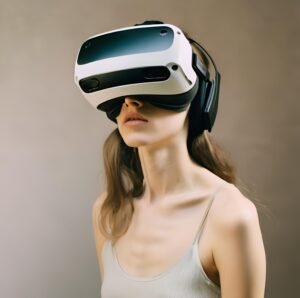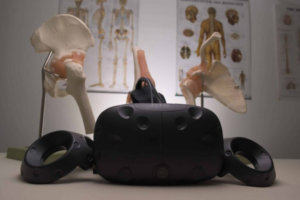In the field of mental illnesses , virtual reality has become an important tool in the various therapies implemented. The use of virtual reality headsets , in the therapeutic course of mental illnesses , is now regularly recommended. Here is a new example, with eating disorders .

What are the different eating disorders?
Let's start, first of all, by clarifying that eating disorders (EDBs) are mental illnesses. Unlike other diet-related illnesses which can be caused by a physical pathology.
EDs therefore correspond to behaviors, regarding food, which will be unusual, take place over time and, above all, have harmful effects on the physical and mental health of the affected subject.
There are three types of TCA:
- bulimia (compulsively eating large quantities of food, followed by compensation in the form of vomiting, intensive physical exercise, taking medications, etc.).
- binge eating disorder (when binge eating is not associated with compensation as mentioned above).
- anorexia nervosa (when a person develops a strong fear of gaining weight and subjecting themselves to food deprivation, with the aim of extreme weight loss. The person always thinks of themselves as overweight).
Mental illnesses such as eating disorders affect a diverse audience. However, we note a greater presence of these disorders among young women. Indeed, according to the High Authority of Health (HAS) , bulimia affects 1.5% of 11-20 year olds, for a ratio of three girls to one boy. Likewise, anorexia nervosa affects 1.2% of women and 0.25% of men. Finally, binge eating disorder is present in both men and women.
What roles can virtual reality play in TCA?
Faced with eating disorders, as with other mental disorders, virtual reality can be a useful tool. In Canada, the University of Quebec at Trois Rivière conducted a study showing that virtual reality can help prevent and treat certain disorders linked to TCA.

Source: Photo by Jesper Aggergaard on Unsplash
The teams of researcher Johana Monthuy-Blanc have developed a new form of evaluation. Usually in TCA assessments, people must choose the silhouette they think most resembles them from drawings on a sheet of paper.
Johana Monthuy-Blanc opted for virtual reality. In fact, via a headset, the person being treated is offered seven silhouettes, from the thinnest to the most corpulent. First, the person chooses the silhouette that suits them best, from an external point of view. Then she sees the body chosen in the first person, on herself. Which makes the experience and evaluation more immersive and more impactful.
The work of Johana Monthuy-Blanc offers much more precise assessments thanks to virtual reality. Thus, virtual reality allows a more precise diagnosis, which leads to better care for the person affected by a TCA. Better, more precise therapy is possible.
As with other treatments for disorders such as phobias or anxiety , or Alzheimer's, virtual reality can be useful in therapies related to TCA. Whether it is the evaluation or the implementation of a treatment, virtual reality has become a valuable tool in the field.


